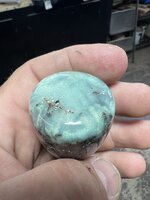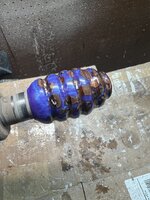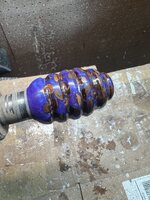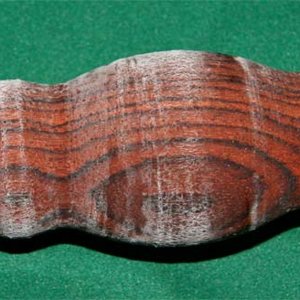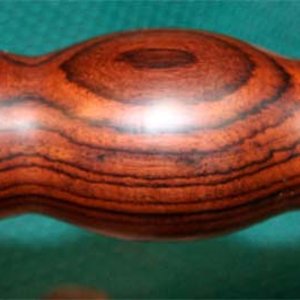As Kenny wrote, "If that's the case when you're through turning look and make sure the surface is smooth." While many people use paper towel as the applicator successfully, I had problems with it as it did not apply silky smooth layers for me, and that sometimes led to white spots. I use foam applicators, or small pen parts bags or even latex gloves to smooth the CA, usually medium CA. That does require a bit more curing time. But when it is applied with smooth layers (for me) I have no problems with pits or pin holes in the CA.
One other factor is temp and humidity. Temps in the low 70°s and lower with high humidity - that also increase chances of white spots. These white spots are due specifically to temp and humidity and are on the surface and can be fine sanded off if a smooth surface was applied. See below
Imported Photo from leehljp. Please edit title and description.
www.penturners.org
Imported Photo from leehljp. Please edit title and description.
www.penturners.org

